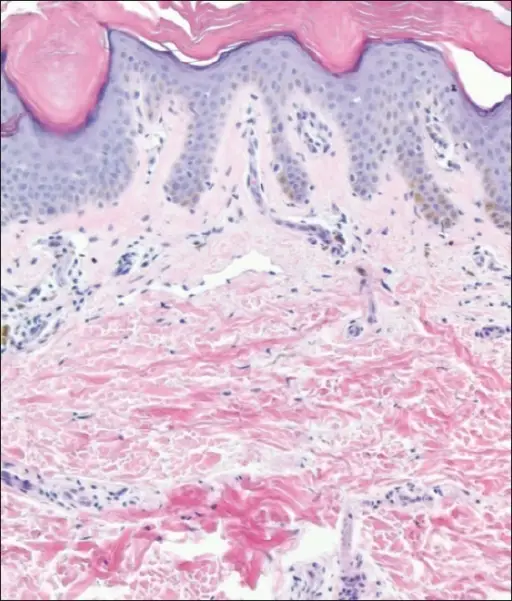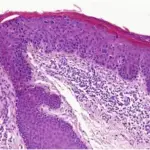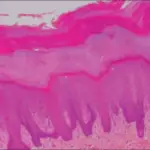Ichthyosis is a group of genetically inherited ailments associated with hyperkeratosis that result in clinically fishlike scales.
What is the Pathology of Ichthyosis?
The pathology of ichthyosis is:
-Etiology: The cause of ichthyosis is a genetic predisposition, connotation to lymphoid and visceral malignant.
-Genes involved: STS gene.
-Pathogenesis: The sequence of events that lead to ichthyosis, abnormality resides in defective mechanisms of desquamation, causing the retention of abnormally formed scale.
-Morphology: The morphology associated with ichthyosis shows the prominent fishlike scales.
-Histology: The histology associated with ichthyosis shows the subtle build-up of compacted stratum corneum.
How does Ichthyosis Present?
Patients with ichthyosis are typically common in males than females present at an age range of 10 to 40 years. The symptoms, features, and clinical findings associated with ichthyosis include ocular/periocular manifestations, fine scales, varying degrees of skin dryness, scaling of trunk, legs, abdomen, and buttocks.
How is Ichthyosis Diagnosed?
Ichthyosis is diagnosed through laboratory studies-skin biopsy, CBC count, TFTs.
How is Ichthyosis Treated?
Ichthyosis is treated through medical care which includes systemic therapy oral retinoids, ocular therapy, topical therapy cyclosporine.
What is the Prognosis of Ichthyosis?
The prognosis of ichthyosis is fair.



